How Melbourne Museum landed the world’s most complete triceratops fossil
Forget Jurassic Park, Melbourne Museum is home to the world’s greatest dinosaur story. The museum will be the envy of the palaeontology world when it unveils its 67 million-year-old fossil.
Confidential
Don't miss out on the headlines from Confidential. Followed categories will be added to My News.
It was an acquisition 67 million years in the making.
But, even within the constructs of that mind-boggling time frame, Melbourne palaeontologist Dr Erich Fitzgerald had to be at the right place at the right time. And sending the right text messages to the right person.
In 2019, Dr Fitzgerald, who is the senior curator of palaeontology at Museums Victoria, went to North America on a fact finding mission.
His trip included a stop at Dino Lab, a fossil wholesaler and prehistoric boutique in Canada.
“I got a message from Erich that they were possibly looking to acquire a dinosaur for the (Melbourne) Museum,” Terry Ciotka, of Dino Lab, said. “We met and looked at a T-Rex, but it wasn’t a good piece. Then he saw the triceratops.”
The triceratops was a near-complete fossil of a 67-million-year-old adult triceratops horridus. With 87 per cent of the fossil — 270 out of 300 bones — intact, the specimen is the most finely preserved triceratops ever found, including skin impressions and tendons, and almost-perfect skull and spine.
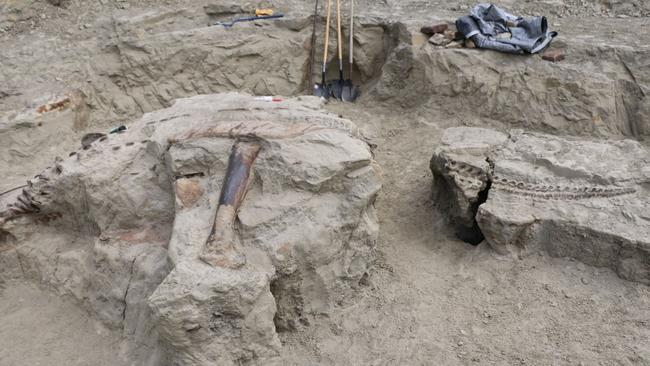
At that point, the dinosaur bones were a picture, on Ciotka’s computer screen, of a triceratops fossil found on a private property in Montana in 2014.
But first impressions count, and Dr Fitzgerald was already smitten.
“Triceratops is quite a common fossil, but specimens like this are not common. It ticked all the boxes,” Dr Fitzgerald says.
“Triceratops are like the pigeons or cows of the Cretaceous period (a geological period, 66 to 145 million years ago). It’s been said if you’re in the badlands of western North America, you can’t be there without tripping over a triceratops bone.”
However, by any measure, Melbourne’s triceratops is a game changer, not only for the Museum, but its extraordinary scientific and research value.
Museums Victoria chief executive, Lynley Crosswell, said: “This is among the most globally significant dinosaur discoveries ever made, and the most complete dinosaur fossil ever acquired by an Australasian museum.”
Museums Victoria bought the triceratops fossil for $3 million.
“If a museum is going to make a splash with a dinosaur, it has to be good and scientifically important,” Mr Ciotka said. “It has be something the museum can justify, and help the species become better understood.”
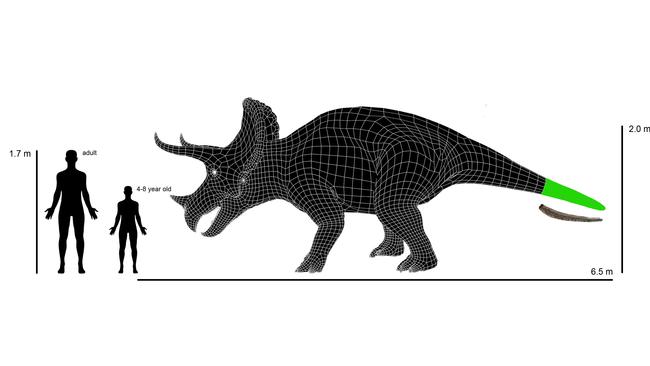
Melbourne’s triceratops is seven metres long from tip to tail, stands at more than 2m tall, and weighs a tonne. Its 261kg skull is also 99 per cent intact, and its wide frill measures 148cm. It also has three horns.
Dr Fitzgerald said the triceratops found in Montana fell and died in soft soil on the edge of a creek. It eventually became submerged, and was finely preserved by silt and sediments.
“The skeleton was found with almost all the bones connected together, in the same position when the animal died. They were all in place,” Dr Fitzgerald said.
The 87 per cent complete fossil statistic, Dr Fitzgerald says, is significant.
“There is no T-Rex skeleton that’s been found that’s anywhere near that complete. It doesn’t happen. Most dinosaur fossils, if they get close to 50 per cent, we’re laughing. But this is unusually complete, exceptionally complete.”
Yet, the most important part of the triceratops acquisition — getting it from Montana to Melbourne — was far from a done deal.
Dino Lab had transported the fossil from the northwest US state to its base on Vancouver Island.
But how do you prepare a 67-million-year-old, 1000kg dinosaur for a trans-Pacific trip down under?
Boats, planes and trucks was the easy answer, but the pandemic and border closures presented new sets of challenges.
Dr Fitzgerald and his team couldn’t go to Dino Lab to construct an armature (a metal skeleton within the dinosaur skeleton which the bones are fitted on), so did it by Zoom.
“It’s a technically and artistically demanding task. It involves a lot of tweaking, checking, revision, going back, even the odd disagreement and drama,” he says.
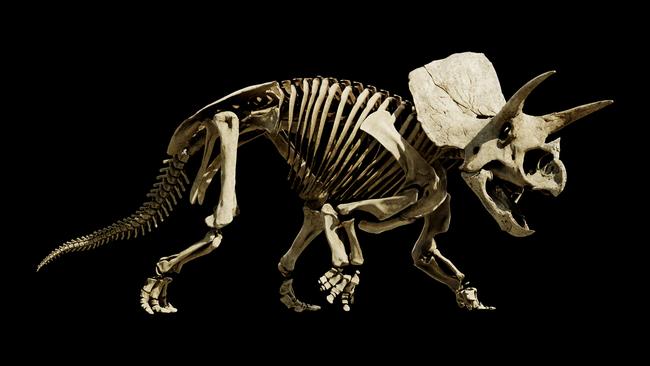
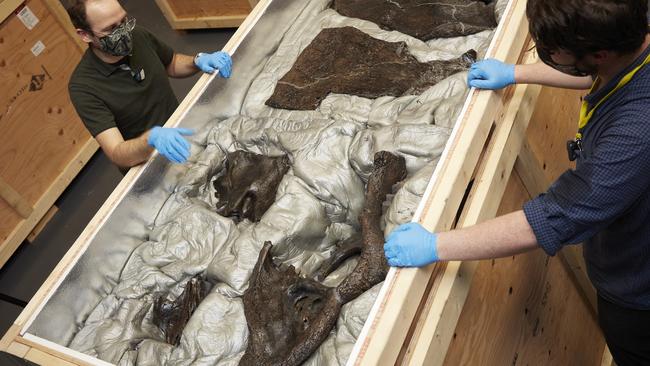
Mr Ciotka says one difficult session involved getting the front hands of the triceratops in the correct position.
“I thought they were being a bit picky,” he says of his virtual collaboration with the Melbourne team. “But when I stood back, I thought, Oh my God, these are the most perfect hands I’ve ever seen in my life. It looks like the Triceratops is in motion. It’s beautiful.”
“All the palaeontologists on this project ended up with hand and foot fetishes,” Dr Fitzgerald added, laughing.
“We had to, because it’s one of the least known bits on the triceratops. Everyone focuses on the big, dramatic frills, but it’s the hands and the feet that carries the weight of their body, and also the dynamism.”
Dino Lab packed the bones into eight crates, with some containers as a big as a car.
Mr Ciotka said: “On the inside of the crates, we sprayed foam that expands and solidifies. Once the chemical rises, we set the bones in it, like an egg carton. The bones sits in the middle of two pillows, if you will.”
The Triceratops cargo sailed from Vancouver Island to Vancouver, flew to Sydney, then loaded on to two trucks and driven to Melbourne.
It arrived at Melbourne Museum in Carlton in July.
“We’d seen the photos and 3D scans, but seeing the actual bones for the first time was an emotional moment,” Dr Fitzgerald said. “It made me think about how the fossil will be used to advance knowledge, education, and inspire people about nature, the environment and life. “It’s tangible. It’s real.”
In Melbourne, teams unpacked the bones before conducting condition checks, a stock take and cataloguing of every piece. Each bone is photographed and given a unique identifying number.
After it goes on display on Melbourne Museum, Dr Fitzgerald and his team are keen to explore the backstory of the triceratops.
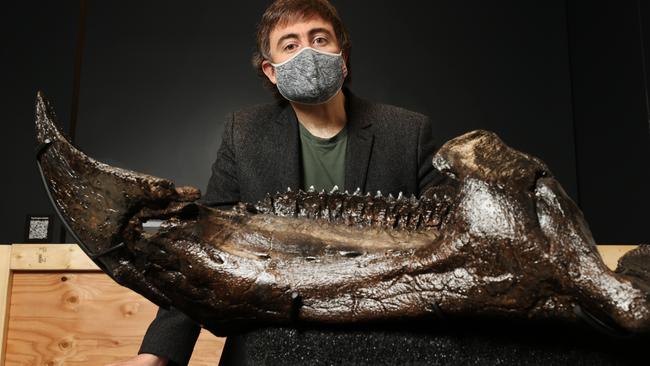
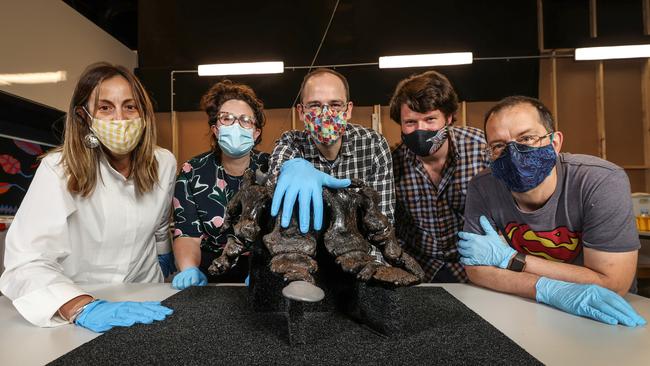
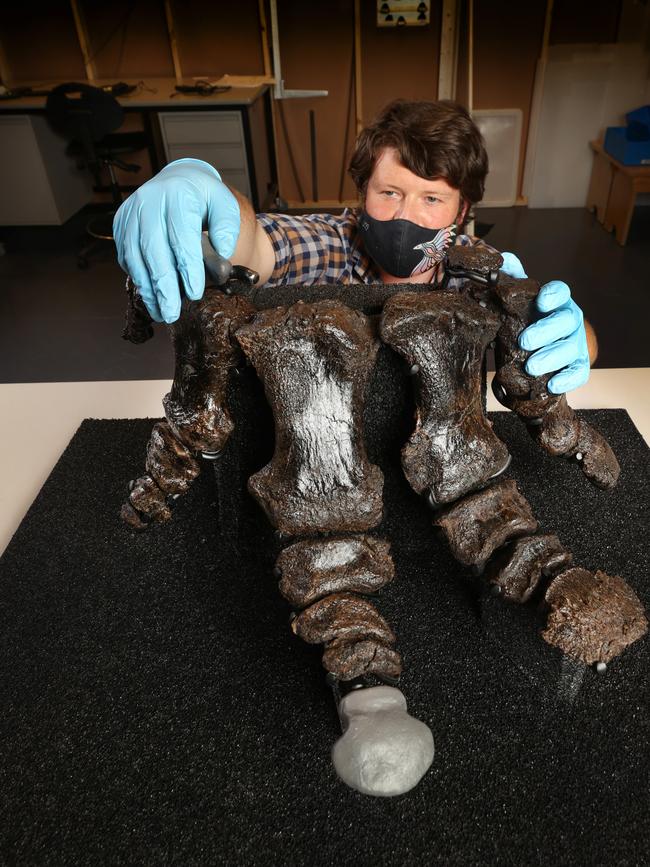
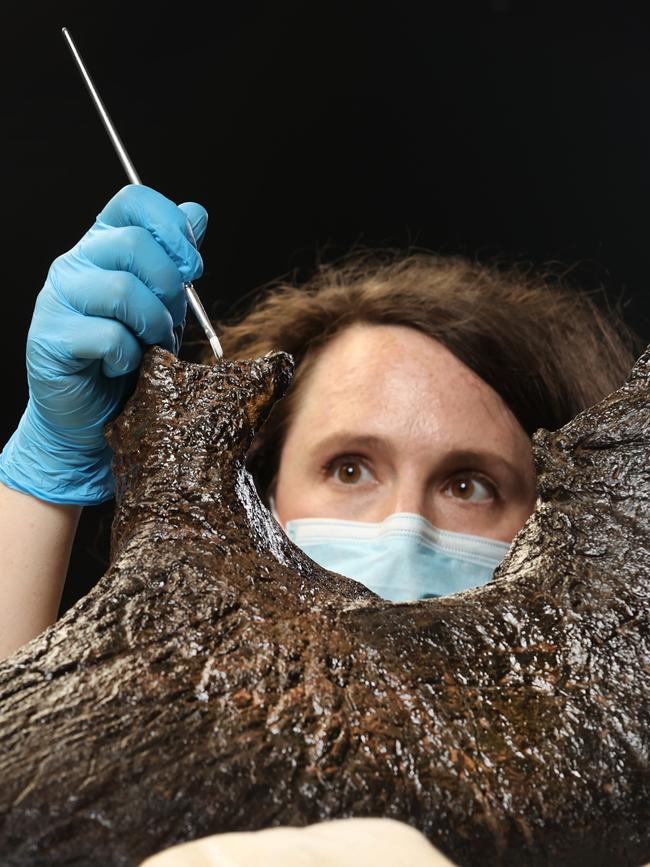
“The next major phase is to do more scientific research to address those questions,” he says.
“I want to know how old was it when it died? There are indications from the bones that it’s not young, but also not fully grown. Can we tell if this is a male or female? And how do you find that out with something that’s been extinct for 66 million years?”
In the meantime, teams will soon start assembling triceratops for a big reveal and launch event in 2022.
“That’s going to be an interesting task,” Dr Fitzgerald said.
“Mounting a big, real fossil skeleton is something we’ve not done, in living memory, in Australia. There will be tense moments, which always happens when you’re moving heavy, fragile bones.”
Dr Fitzgerald is proud the world’s most complete and finely preserved triceratops has a home in Melbourne.
“There are lots of replicas and models of triceratops in museums around the world,” he said. “It’s probably not the highest priority for some museums, who already have one, or an example of one. But we didn’t. It’s surreal that it’s here and it belongs to the people of Victoria.”
That said, Dr Fitzgerald says some palaeontologists and experts abroad are doing a double-take over Melbourne Museum’s quiet coup.
“In America, the home of triceratops, it’s like, ‘sorry, it’s gone where?’” Dr Fitzgerald said.
“But, here, in Victoria, there’s a strong element of, ‘well, why not?’”
For more visit melbournemuseumtriceratops.com





